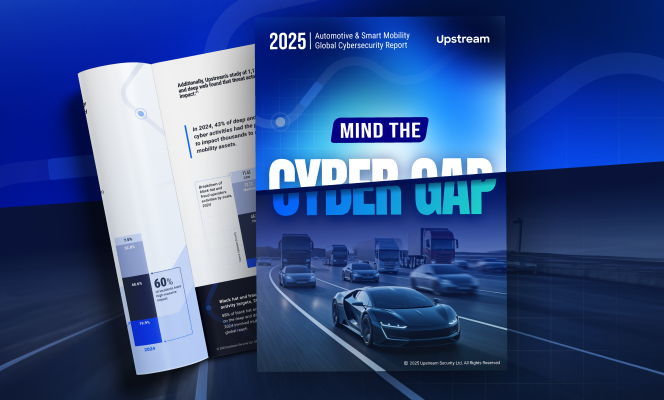

Protecting the Cyber-Physical Spectrum of the Commercial Vehicle Ecosystem
In the past decade, the commercial vehicle ecosystem has transformed from a mechanical network into a hyperconnected digital organism. Trucks talk to dispatch centers. Trailers report temperature and tire pressure in real time. Remote access platforms can unlock, reroute, and even reconfigure vehicle systems at scale.
This connectivity has made logistics faster, leaner, and smarter. But as the industry’s operational fabric has gone digital, so have its threats. The same systems that deliver efficiency and customer satisfaction are now being turned into tools of theft, disruption, and deception.
A New Breed of Attack on Commercial Vehicles
Earlier this month, cybersecurity researchers uncovered a disturbing pattern: a coordinated campaign of cyber-enabled cargo theft sweeping across North America’s trucking and logistics sector.
The method is as elegant as it is alarming. Attackers infiltrate logistics networks by exploiting Remote Monitoring and Management (RMM) tools, the same trusted utilities that fleet operators use for diagnostics, updates, and telemetry. Once inside, the attackers masquerade as legitimate carriers or brokers, hijack dispatch systems, and divert shipments. In other words, they’re using digital control to commit physical theft.
For years, cyber risks in mobility meant primarily ransomware or data breaches. But this is something new. It’s a hybrid attack, where cyber compromise directly translates into lost cargo, stranded drivers, and broken supply chains.
The Double-Edged Sword of Remote Connectivity
Connectivity has always been a paradox. In commercial fleets, it’s both the backbone of efficiency and a potential single point of failure. Modern vehicles are woven into a network of telematics systems, broker load boards, dispatch platforms, and OEM backends. Every data link is also a potential control path. And when remote access is compromised, that control becomes dangerous.
Through compromised credentials or RMM abuse, attackers can silently:
- Alter dispatch instructions and reroute vehicles to fraudulent destinations.
- Access telematics systems that expose vehicle location and status in real time.
- Disable or spoof remote diagnostics to hide tampering or misdirect technicians
- Impersonate brokers and divert high-value freight to off-grid pickup points
The result? A logistics ecosystem where digital compromise has immediate operational and safety consequences.
Consequences Extend into the Physical Dimension
This wave of attacks should serve as a wake-up call for every OEM, fleet operator, and mobility platform provider. It signals the convergence of cyber and kinetic risk, a world where virtual breaches cause physical losses:
- Safety exposure
When a vehicle’s route, telematics, or locking mechanisms are under remote control, the risk extends from data loss to physical harm. Drivers can be lured into unsafe stops or manipulated routes. A compromised vehicle isn’t just a data breach, it’s a road hazard. - Operational disruption
A single compromised dispatch platform can stall dozens of deliveries. Misdirected or canceled loads cascade across the supply chain, causing service disruptions that ripple through warehouses, customers, and insurers. - Cargo theft
Cargo theft used to involve bolt cutters and stolen IDs. Now, it’s malware and RMM sessions. Attackers no longer need to steal a truck, they can simply reroute it digitally.
This new modus operandi is harder to detect, easier to scale, and far more profitable.
This recent attack also exposes the limits of traditional defense strategies. The threat isn’t brute force, it’s subversion of trust. Attackers aren’t just exploiting software. They’re exploiting how the industry works: speed, urgency, interconnectedness, and a chain of trust that often extends across dozens of partners.
Staying Ahead: Proactive Risk Intelligence and Live Threat Monitoring
The industry can no longer afford a reactive posture. Cybersecurity in mobility must evolve from passive detection to active anticipation.
1. Deep and Dark Web Monitoring
Attackers plan their moves in the shadows. Credentials, broker logins, dispatch accounts, and fleet access tokens often surface on dark-web forums long before a breach occurs.
Continuous deep- and dark-web monitoring enables early detection of leaked credentials, impersonation attempts, and brand mentions, allowing companies to intervene before criminals act.
2. Live Threat Monitoring
Real-time oversight of RMM tools, dispatch platforms, and connected vehicle systems is critical.
- Monitor all remote sessions and outbound connections for anomalies.
- Enforce strict allow-lists for RMM software, if it’s not sanctioned, it shouldn’t run.
- Correlated telematics data with security monitoring, via digital twin technologies, to identify suspicious remote actions on vehicles in motion.
3. API Security: Protecting the Digital Nerves of the Fleet
The modern commercial vehicle doesn’t operate in isolation, it’s a node in a vast, API-driven ecosystem. From telematics platforms and insurance partners to maintenance providers and logistics marketplaces, hundreds of third parties access vehicle data or control functions via APIs.
Each API transaction represents a potential entry point for attackers. When authentication is weak or permissions are overly broad, APIs can be exploited to issue remote commands, alter vehicle states, or exfiltrate sensitive operational data.
To secure this layer:
- Implement continuous API discovery and inventory, ensuring all external and internal connections are known and monitored.
- Apply strict access control and granular permissions, especially for APIs linked to telematics, diagnostics, or remote vehicle commands.
- Enforce real-time monitoring and anomaly detection for API traffic to flag suspicious access patterns.
- Mandate third-party security assurance: any partner connecting to your vehicle or fleet data should meet the same cybersecurity standards you do.
In the connected vehicle ecosystem, API security is not just about data, it’s about control. Protecting those digital pathways means protecting the vehicles, the cargo, and the people who rely on them.
A Holistic AI-Driven Approach to Protecting Commercial Fleets
Cybersecurity executives in automotive and logistics are now facing a new responsibility: protecting motion itself. The lines between IT and operational systems, between digital risk and physical safety, have dissolved.
The new attack surface, sprawling across vehicles, APIs, telematics, cloud platforms, and partner networks, is far too dynamic for manual oversight alone. AI must now become a core component of fleet defense.
This is not a distant vision, it’s a necessity. Commercial vehicle cybersecurity operations must evolve into AI-augmented ecosystems, where purpose–built ML and LLM models continuously monitor, learn, and adapt to protect the vehicles that keep economies moving.
The path forward demands collaboration across OEMs, Tier-1 suppliers, fleet operators, and cybersecurity vendors to build visibility and resilience across the entire digital-mobility stack.
Every connection that enables efficiency must now be treated as a potential attack surface.
Every remote access capability must have a defense plan. And every fleet must know, not guess, what’s happening across its ecosystem, in real time and at machine scale.
Because when the open road becomes the new attack surface, connectivity isn’t just a feature, it’s an intelligent battlefield. And in that battlefield, AI is no longer optional.

